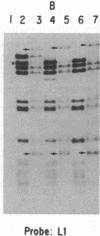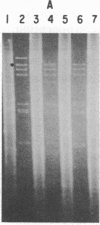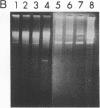Abstract
Requisite to a detailed understanding of the molecular basis of bacterial pathogenesis is a genetic system that allows for the transfer, mutation, and expression of specific genes. Because of the continuing importance of tuberculosis and leprosy worldwide, we initiated studies to develop a genetic system in mycobacteria and here report the use of two complementary strategies to introduce and express selectable genetic markers. First, an Escherichia coli cosmid was inserted into the temperate mycobacteriophage L1, generating shuttle phasmids replicating as plasmids in E. coli and phage capable of lysogenizing the mycobacterial host. These temperate shuttle phasmids form turbid plaques on Mycobacterium smegmatis and, upon lysogenization, confer resistance to superinfection and integrate within the mycobacterial chromosome. When an L1 shuttle phasmid containing a cloned gene conferring kanamycin resistance in E. coli was introduced into M. smegmatis, stable kanamycin-resistant colonies--i.e., lysogens--were obtained. Second, to develop a plasmid transformation system in mycobacteria, M. fortuitum/E. coli hybrid plasmids containing mycobacterial and E. coli replicons and a kanamycin-resistance gene were constructed. When introduced into M. smegmatis or BCG (Mycobacterium tuberculosis typus bovinus var. Bacille-Calmette-Guérin) by electroporation, these shuttle plasmids conferred stable kanamycin resistance upon transformants. These systems should facilitate genetic analyses of mycobacterial pathogenesis and the development of recombinant mycobacterial vaccines.
Full text
PDF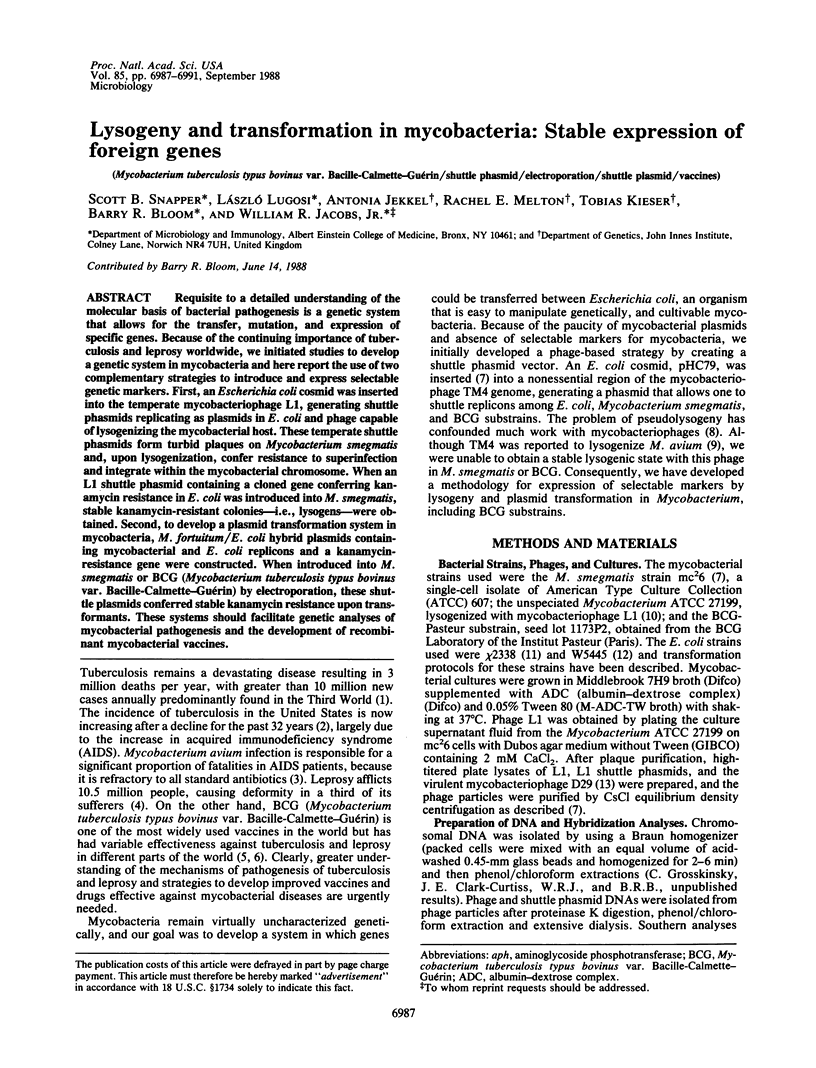
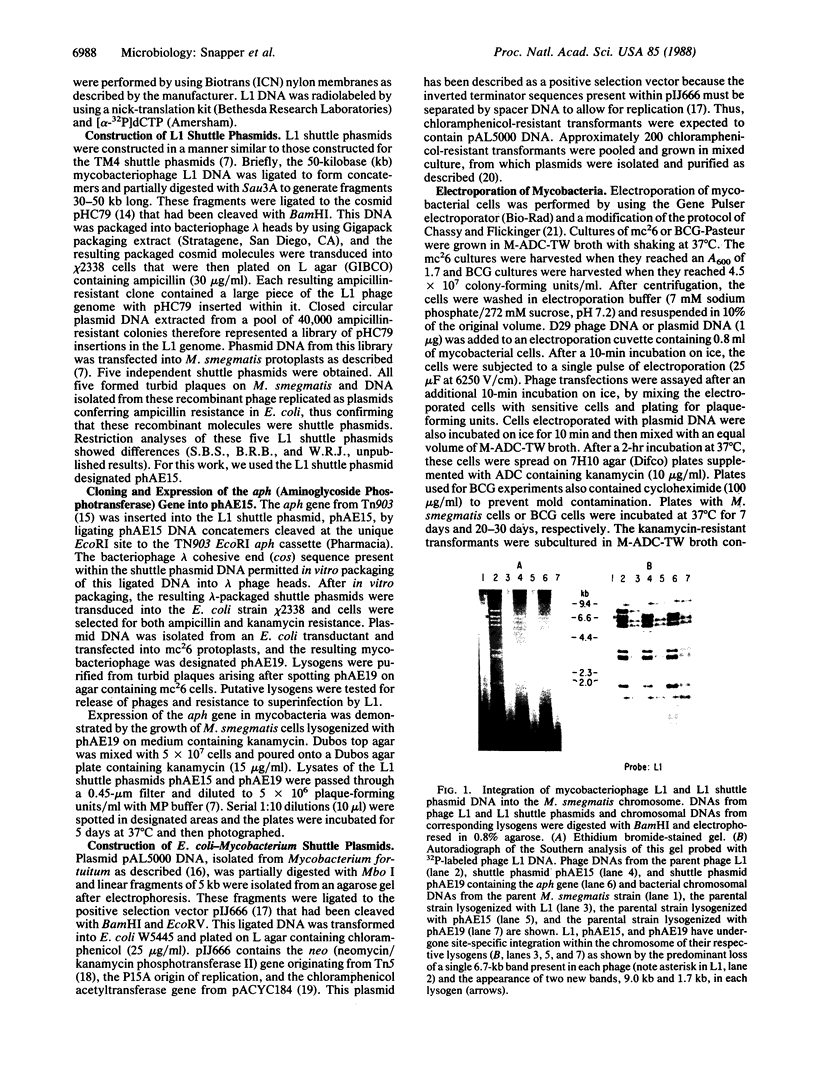
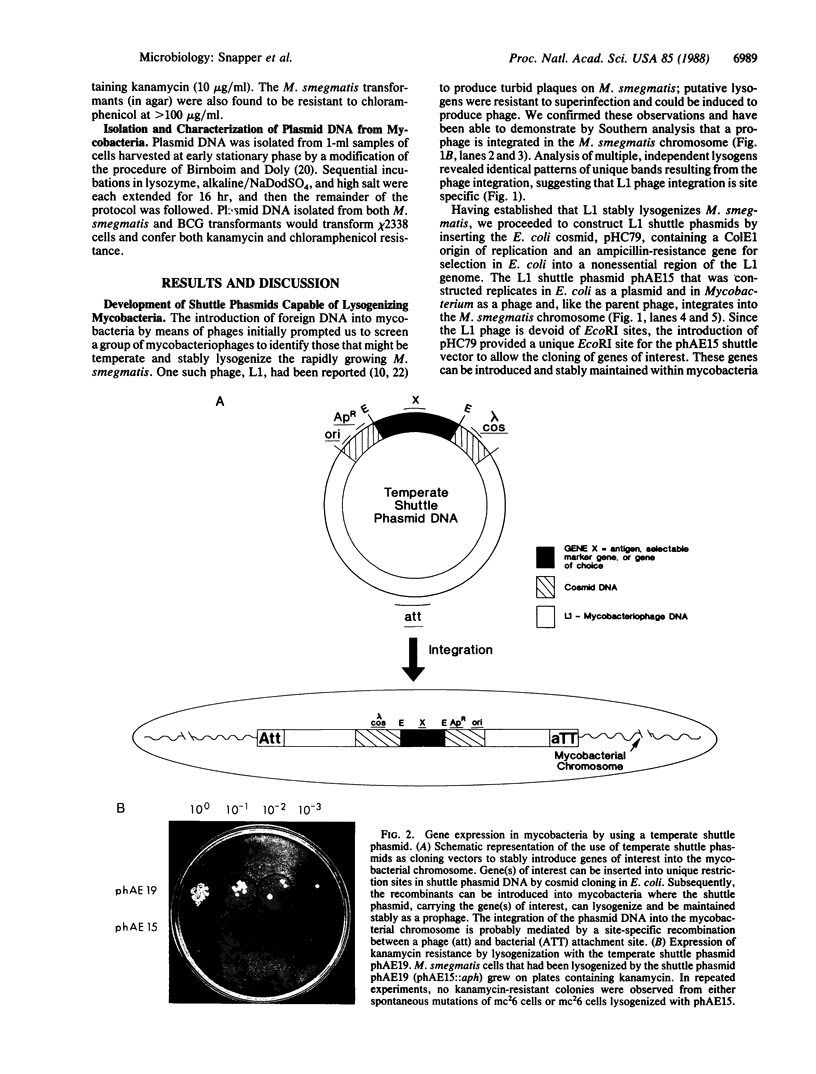
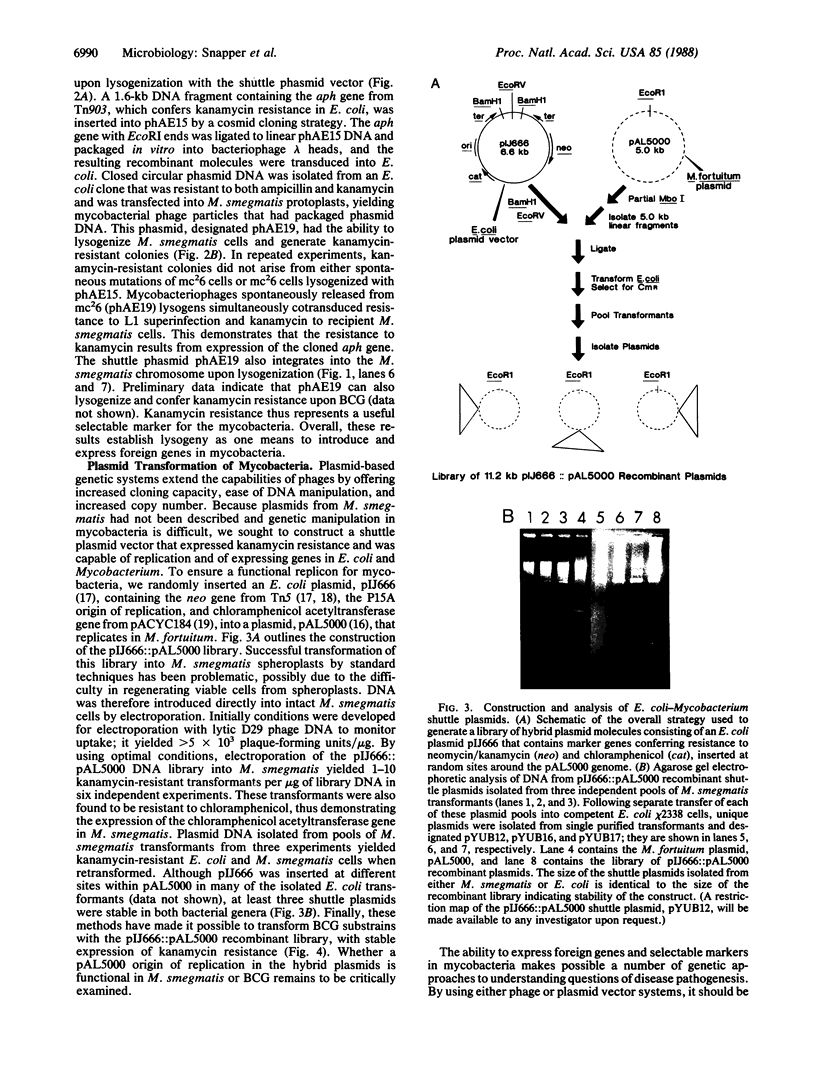
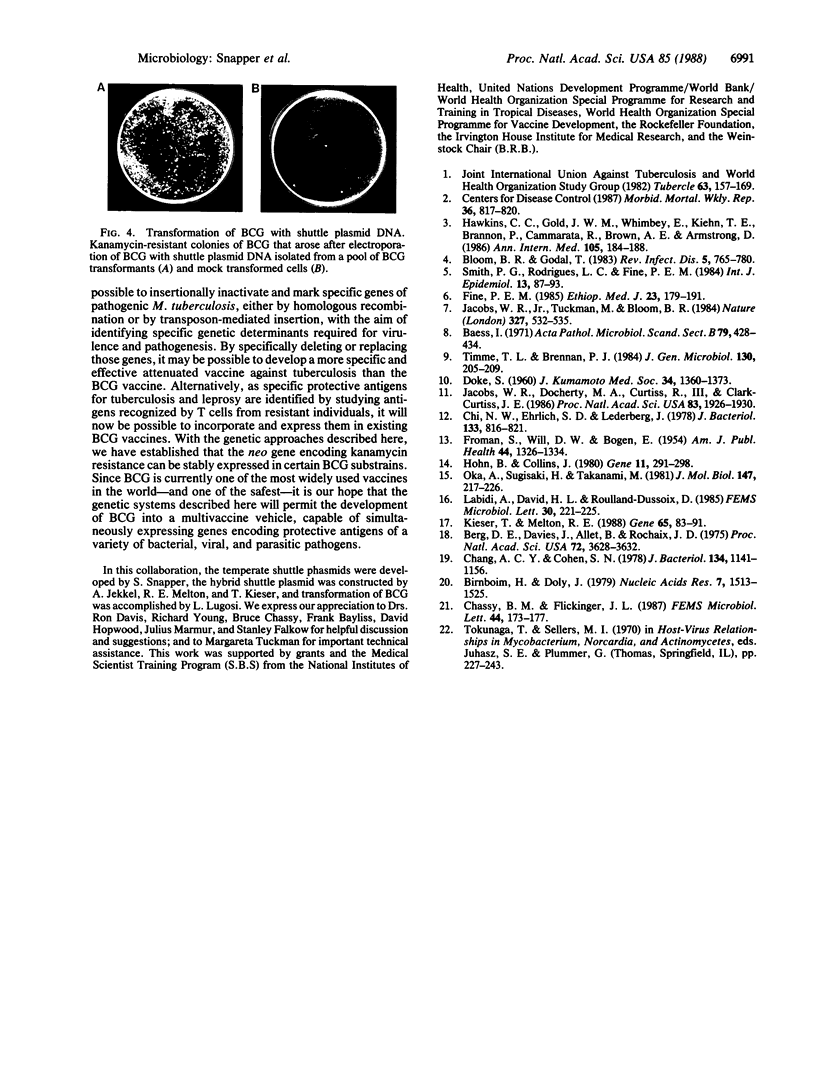
Images in this article
Selected References
These references are in PubMed. This may not be the complete list of references from this article.
- Baess I. Report on a pseudolysogenic mycobacterium and a review of the literature concerning pseudolysogeny. Acta Pathol Microbiol Scand B Microbiol Immunol. 1971;79(3):428–434. doi: 10.1111/j.1699-0463.1971.tb00084.x. [DOI] [PubMed] [Google Scholar]
- Berg D. E., Davies J., Allet B., Rochaix J. D. Transposition of R factor genes to bacteriophage lambda. Proc Natl Acad Sci U S A. 1975 Sep;72(9):3628–3632. doi: 10.1073/pnas.72.9.3628. [DOI] [PMC free article] [PubMed] [Google Scholar]
- Birnboim H. C., Doly J. A rapid alkaline extraction procedure for screening recombinant plasmid DNA. Nucleic Acids Res. 1979 Nov 24;7(6):1513–1523. doi: 10.1093/nar/7.6.1513. [DOI] [PMC free article] [PubMed] [Google Scholar]
- Bloom B. R., Godal T. Selective primary health care: strategies for control of disease in the developing world. V. Leprosy. Rev Infect Dis. 1983 Jul-Aug;5(4):765–780. doi: 10.1093/clinids/5.4.765. [DOI] [PubMed] [Google Scholar]
- Chang A. C., Cohen S. N. Construction and characterization of amplifiable multicopy DNA cloning vehicles derived from the P15A cryptic miniplasmid. J Bacteriol. 1978 Jun;134(3):1141–1156. doi: 10.1128/jb.134.3.1141-1156.1978. [DOI] [PMC free article] [PubMed] [Google Scholar]
- Chi N. Y., Ehrlich S. D., Lederberg J. Functional expression of two Bacillus subtilis chromosomal genes in Escherichia coli. J Bacteriol. 1978 Feb;133(2):816–821. doi: 10.1128/jb.133.2.816-821.1978. [DOI] [PMC free article] [PubMed] [Google Scholar]
- FROMAN S., WILL D. W., BOGEN E. Bacteriophage active against virulent Mycobacterium tuberculosis. I. Isolation and activity. Am J Public Health Nations Health. 1954 Oct;44(10):1326–1333. doi: 10.2105/ajph.44.10.1326. [DOI] [PMC free article] [PubMed] [Google Scholar]
- Fine P. E. The Kellersberger memorial lecture, 1985. The role of BCG in the control of leprosy. Ethiop Med J. 1985 Oct;23(4):179–191. [PubMed] [Google Scholar]
- Hawkins C. C., Gold J. W., Whimbey E., Kiehn T. E., Brannon P., Cammarata R., Brown A. E., Armstrong D. Mycobacterium avium complex infections in patients with the acquired immunodeficiency syndrome. Ann Intern Med. 1986 Aug;105(2):184–188. doi: 10.7326/0003-4819-105-2-184. [DOI] [PubMed] [Google Scholar]
- Hohn B., Collins J. A small cosmid for efficient cloning of large DNA fragments. Gene. 1980 Nov;11(3-4):291–298. doi: 10.1016/0378-1119(80)90069-4. [DOI] [PubMed] [Google Scholar]
- Jacobs W. R., Docherty M. A., Curtiss R., 3rd, Clark-Curtiss J. E. Expression of Mycobacterium leprae genes from a Streptococcus mutans promoter in Escherichia coli K-12. Proc Natl Acad Sci U S A. 1986 Mar;83(6):1926–1930. doi: 10.1073/pnas.83.6.1926. [DOI] [PMC free article] [PubMed] [Google Scholar]
- Jacobs W. R., Jr, Tuckman M., Bloom B. R. Introduction of foreign DNA into mycobacteria using a shuttle phasmid. Nature. 1987 Jun 11;327(6122):532–535. doi: 10.1038/327532a0. [DOI] [PubMed] [Google Scholar]
- Kieser T., Melton R. E. Plasmid pIJ699, a multi-copy positive-selection vector for Streptomyces. Gene. 1988 May 15;65(1):83–91. doi: 10.1016/0378-1119(88)90419-2. [DOI] [PubMed] [Google Scholar]
- Oka A., Sugisaki H., Takanami M. Nucleotide sequence of the kanamycin resistance transposon Tn903. J Mol Biol. 1981 Apr 5;147(2):217–226. doi: 10.1016/0022-2836(81)90438-1. [DOI] [PubMed] [Google Scholar]
- Smith P. G., Rodrigues L. C., Fine P. E. Assessment of the protective efficacy of vaccines against common diseases using case-control and cohort studies. Int J Epidemiol. 1984 Mar;13(1):87–93. doi: 10.1093/ije/13.1.87. [DOI] [PubMed] [Google Scholar]



